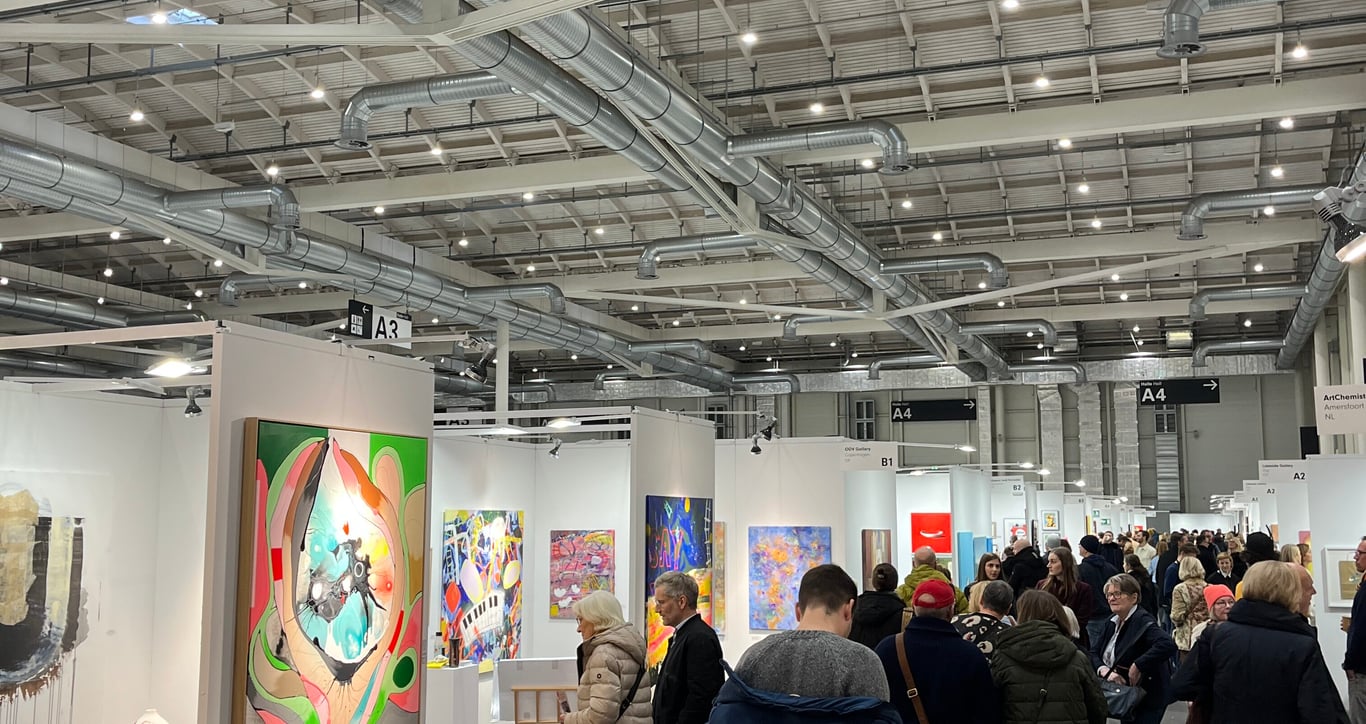Hilma af Klint – The Enigmatic Pioneer of Abstract Art

Rediscovering the Spiritual and Artistic Genius of a Forgotten Visionary
Hilma af Klint (1862-1944) was a Swedish artist whose groundbreaking work in abstraction and spirituality predates the likes of Wassily Kandinsky and Kazimir Malevich. Despite her significant contributions to the development of abstract art, af Klint’s work remained largely unknown until the late 20th century. In this article, we will delve into the life of Hilma af Klint, what made her art exceptional, and the unique contributions she made to the art world.

“The Ten Largest no. 7” by Hilma af Klint
Early Life and Education
Born into a family with a strong naval background, af Klint’s upbringing was immersed in nature and scientific curiosity. She demonstrated a natural aptitude for art at a young age, and in 1882, she enrolled at the Royal Academy of Fine Arts in Stockholm. After graduating with honors in 1887, af Klint embarked on a career as a traditional landscape and portrait artist.
Spiritual Beginnings
Hilma af Klint’s journey toward abstraction was deeply intertwined with her spiritual beliefs. In the late 19th century, af Klint became deeply involved with spiritualism, theosophy, and later, anthroposophy. These esoteric movements, which sought to reconcile science, religion, and mysticism, had a profound impact on af Klint and her artistic practice.
In 1896, af Klint, along with four other women, formed a spiritual group called “The Five” (De Fem). They regularly conducted séances, during which they believed they received messages from spiritual beings they called the “High Masters.” These encounters with the spiritual realm would lay the foundation for af Klint’s groundbreaking work in abstraction.
The Paintings for the Temple
In 1906, af Klint claimed to have received a commission from the High Masters to create a series of paintings that would communicate spiritual truths to humanity. This ambitious project, titled “The Paintings for the Temple,” would become af Klint’s magnum opus, encompassing 193 paintings and drawings produced between 1906 and 1915.
These remarkable works, characterized by bold colors, geometric shapes, and complex symbolism, were unlike anything seen in the art world at the time. Af Klint’s paintings transcended traditional artistic norms and sought to convey profound spiritual insights.

“The Ten Largest no. 1” by Hilma af Klint
A Pioneering Vision
What sets Hilma af Klint’s work apart from her contemporaries is her pioneering approach to abstraction. She began creating abstract art several years before other well-known artists, such as Wassily Kandinsky and Piet Mondrian. Her visionary work challenged conventional notions of art and opened the door for a new form of artistic expression.
Af Klint’s paintings were also deeply rooted in spirituality, with each work serving as a visual representation of complex esoteric ideas. This synthesis of spirituality and abstraction distinguishes her from other early abstract artists, whose motivations were often rooted in formalism or aesthetics.
Obscurity and Rediscovery
Despite her groundbreaking work, Hilma af Klint remained virtually unknown during her lifetime. She rarely exhibited her abstract paintings, believing that the world was not yet ready to understand their spiritual significance. In her will, she stipulated that her abstract work should not be shown publicly until 20 years after her death.
It wasn’t until the 1980s that af Klint’s work began to gain recognition, thanks to art historian Åke Fant, who stumbled upon her extensive collection of paintings and writings. Since then, her work has been the subject of numerous exhibitions and scholarly research, culminating in the 2018-2019 Guggenheim Museum exhibition, “Hilma af K lint: Paintings for the Future,” which drew record-breaking attendance and garnered international acclaim.

“The Ten Largest no. 2” by Hilma af Klint
Unique Contributions to the Art World
Hilma af Klint’s contributions to the art world, though initially overlooked, have become increasingly recognized and celebrated in recent years. Her pioneering approach to abstraction, fueled by her deep engagement with spirituality, set her apart from her contemporaries and laid the groundwork for future generations of abstract artists.
In addition to her role as a trailblazer in abstraction, af Klint’s work also serves as a reminder of the importance of considering alternative narratives in art history. Her rediscovery has prompted a reevaluation of the traditional canon, leading to a more inclusive and diverse understanding of the origins of abstract art.
Furthermore, af Klint’s work has inspired contemporary artists who explore the intersection of spirituality and abstraction, such as Agnes Martin and James Turrell. Her innovative approach to art-making continues to resonate with artists seeking to transcend the boundaries of traditional artistic practice.
Legacy
Hilma af Klint, once a forgotten visionary, has emerged as a pivotal figure in the history of abstract art. Her unique synthesis of spirituality and abstraction set her apart from her contemporaries and paved the way for a new form of artistic expression.
As more people become aware of af Klint’s groundbreaking work, her contributions to the art world continue to be celebrated and studied. Her legacy serves as a testament to the power of art to communicate profound spiritual truths and as a reminder of the importance of reexamining and challenging traditional narratives in art history.




